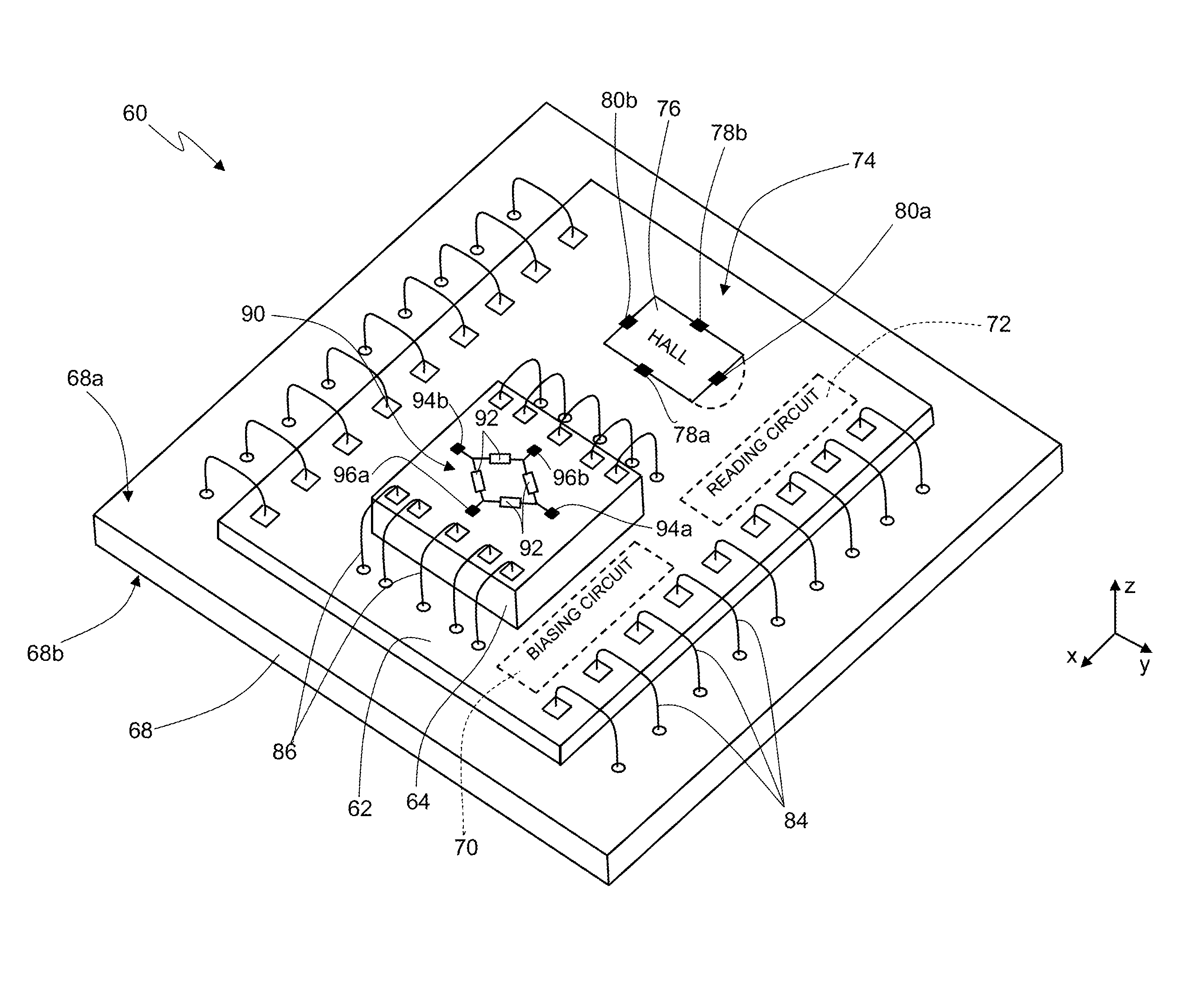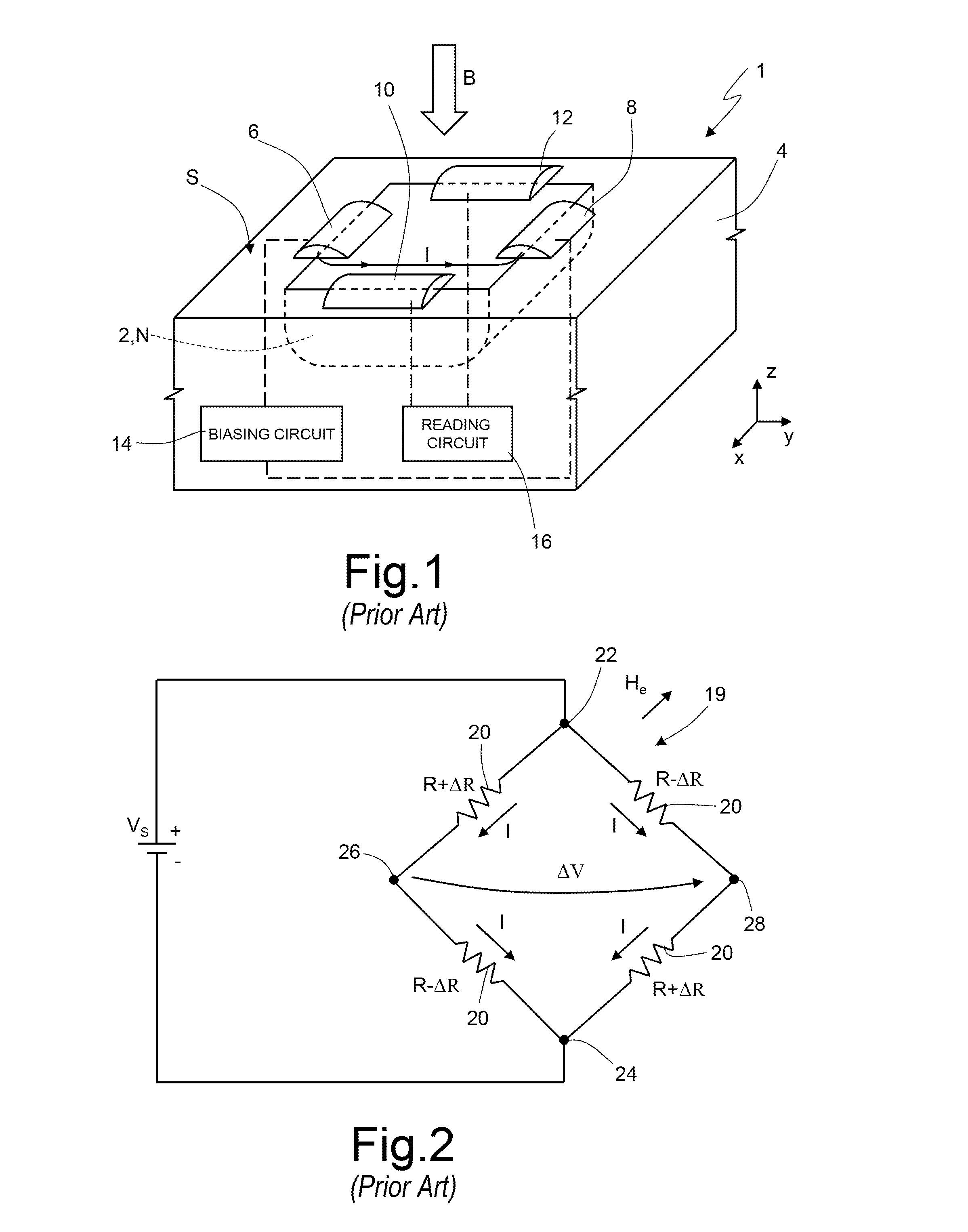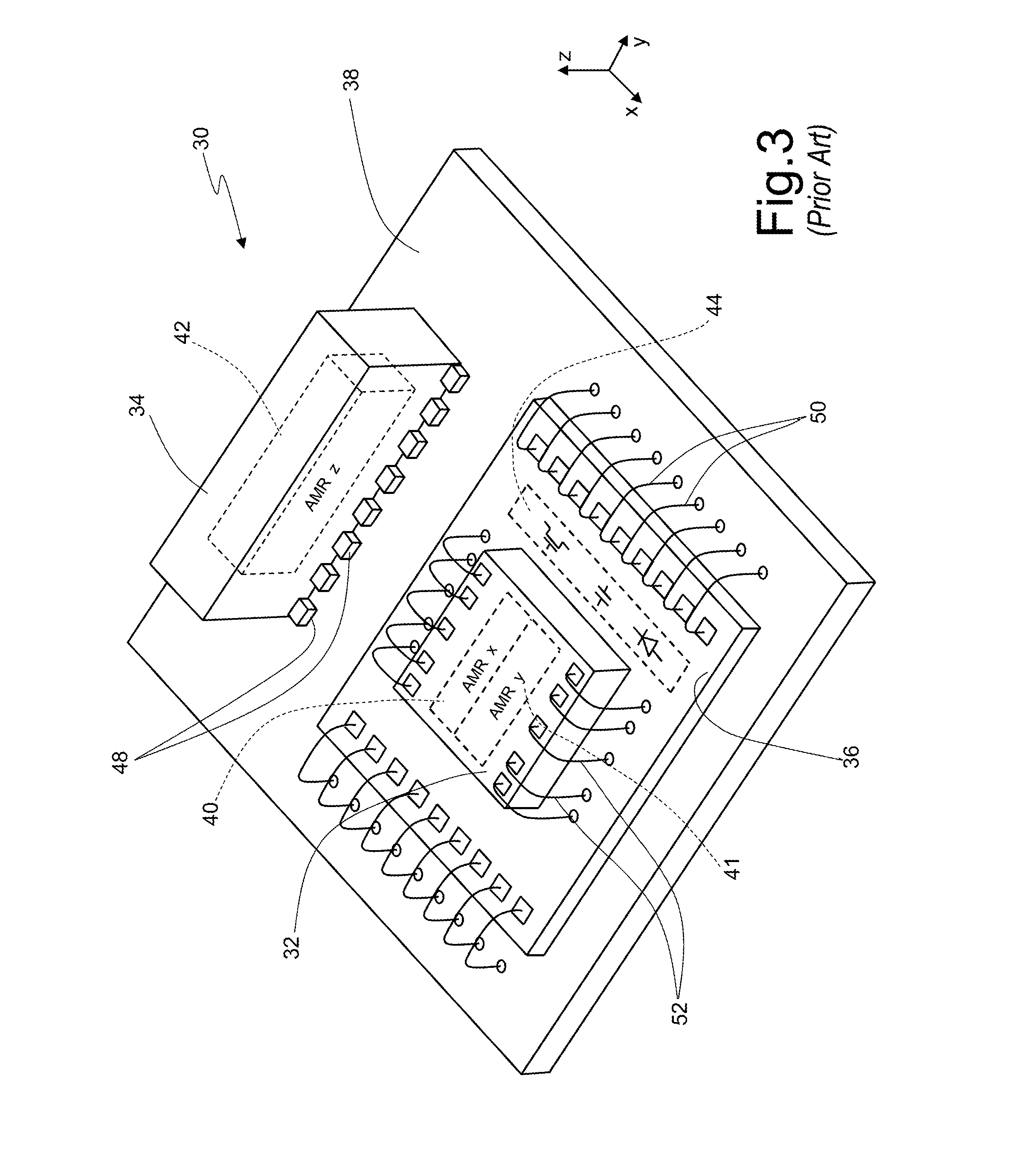Magnetic field sensor including an anisotropic magnetoresistive magnetic sensor and a hall magnetic sensor
a magnetic sensor and anisotropic magnetoresistive technology, applied in the direction of magnetic sensor geometrical arrangement, three-component magnetometer, instruments, etc., can solve the problems of non-standard operation, circuit may prove technologically problematic, and the production of concentrators requires execution of non-standard technological processes with respect to traditional cmos processes, etc., to achieve high sensitivity and high assembly complexity
- Summary
- Abstract
- Description
- Claims
- Application Information
AI Technical Summary
Benefits of technology
Problems solved by technology
Method used
Image
Examples
Embodiment Construction
[0046]FIG. 4 shows a magnetic field sensor 60, which comprises a package (not shown), present inside which are a first die 62, a second die 64, and a support 68.
[0047]The support 68 has a top surface 68a and a bottom surface 68b, is made for example of organic resin, and includes vias and paths made of conductive material (not shown). In practice, the support 68 performs the function of carrying the first and second dice 62, 64, as well as the function of enabling electrical connection of the magnetic field sensor 60 with the outside world. For this purpose, the bottom surface 68b has a plurality of pads of conductive material, not shown.
[0048]In greater detail, formed within the first die 62 are an electronic supply circuit 70 and an electronic reading circuit 72, as well as a Hall transducer 74, i.e., a first electronic structure in itself known and designed to supply, when electrically supplied, a first electrical quantity that is a function of a possible first external magnetic ...
PUM
 Login to View More
Login to View More Abstract
Description
Claims
Application Information
 Login to View More
Login to View More - R&D
- Intellectual Property
- Life Sciences
- Materials
- Tech Scout
- Unparalleled Data Quality
- Higher Quality Content
- 60% Fewer Hallucinations
Browse by: Latest US Patents, China's latest patents, Technical Efficacy Thesaurus, Application Domain, Technology Topic, Popular Technical Reports.
© 2025 PatSnap. All rights reserved.Legal|Privacy policy|Modern Slavery Act Transparency Statement|Sitemap|About US| Contact US: help@patsnap.com



